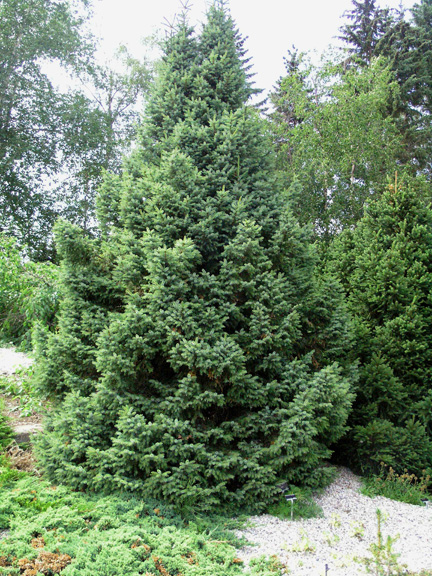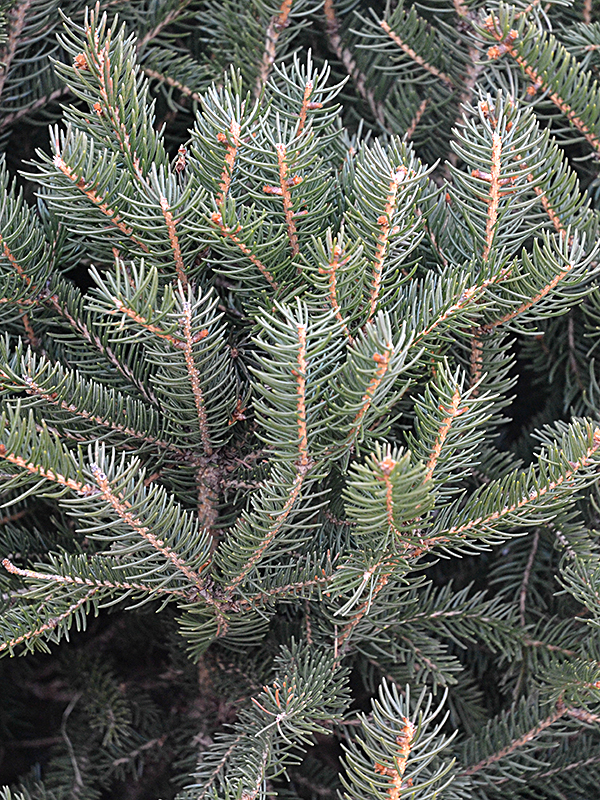| General Description | A dwarf evergreen that is upright and slow growing. Reaches a mature height of 3 m in 40-50 years. A popular choice for small landscapes due to interesting blue-green foliage and low maintenance. |
| ID Characteristic | A very dense, dwarf tree. Needles have two blue glaucious stripes on their underside and green on their upper side. Bark is orange-brown when young and turns red-brown and scaly with age. Branch structure is horizontal. Buds are reddish brown and the plant is commonly sterile. |
| Shape | Globular when young, becoming pyramidal with age. |
| Propagation | Grafted from semi-hardwood cuttings. In the rare chance it produces seeds, they will be sterile. |
| Cultivation | Requires full sun to partial shade. Adaptable to different pH's and highly tolerant of pollution and heat. Must have well drained soil as it will perish rapidly in standing water. Protect from heavy winds. |
| Pests | Generally pest free, but aphids are the most common. Also, gall insects and red spider mites will sometimes cause a problem. Various wood rots, witches' broom, mistletoe, rust, and needle cast are not uncommon. |
| Notable Specimens | Whistling Gardens, Wilsonville, Ontario, Canada. The Arboretum, University of Guelph, Guelph, Ontario, Canada. |
| Habitat | Thrives in well-drained soil with full sun to partial shade. |
| Bark/Stem Description | Young shoots are a smooth pale orange-brown, becoming richer in colour with age. Mature bark is scaly and slightly flaking. Bark is hidden behind the dense foliage. |
| Flower/Leaf Bud Description | Deep orange-brown to reddish brown, 2-5 mm long. Acute, with a sharp point. Scales may be fringed near the apex. |
| Leaf Description | Resembling the straight species only shorter, 7-15 mm long. Medium green on upper side, with two lower sides blue/silver and glaucious. Apex pointed and sharp. Needles are close together and radially arranged. |
| Flower Description | Usually a non-flowering cultivar. |
| Fruit Description | If cones are produced they may be egg shaped cones, most often sterile. |
| Colour Description | Can range from a medium green, a silvery blue, or a combination of both. Bark is reddish brown but generally not highly visable. |
| Texture Description | Medium. |

